How a logo created for only one David Bowie album became his lasting emblem.
If you request someone to sketch “David Bowie’s emblem” they will understand precisely what you imply.
It will immediately recognise everyone and that immortal lightning bolt can give a fair attempt at all with a few pencil strokes.
David Bowie never held on to one particular time period, hairstyle, pair of shoes, aesthetic, or musical style for any length of time.
After swiftly applying it to his face, Bowie promptly discarded the lightning bolt, in contrast to The Rolling Stones’ playful tongue and lips logo, which rapidly became their official emblem on all their albums, stage designs, and merchandise.
Since his death in January 2016, the symbol has become de facto, and over the course of the year, its powerful image has started to fade away, especially into history. It is truly a remarkable and captivating story, reminiscent of a lightning flash.
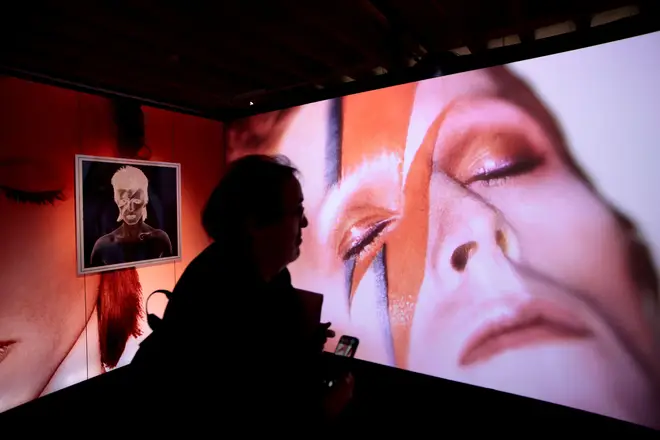
The tale of David Bowie’s thunderbolt is not nearly as intricate and contentious as The Rolling Stones’ Hot Lips.
The designer makeup by Pierre Laroche was physically applied to Bowie’s face, and it was designed by the groundbreaking photographer Brian Duffy – the image was shot by Duffy himself – and the idea came from David Bowie himself.
Duffy, 50, quoted in “Sane Aladdin,” later recalled that I don’t remember who David was, but I do remember having many preconceived ideas before the actual session, so I don’t remember talking about the possibility using a lightning flash.
We examined the inner sleeve and noticed that it resembled his torso, but his face was not necessarily positioned directly above it. The lightning bolts we drew were an exact match, without any doubt.
“David’s son Chris, who was a teenager at the time and present during the session, mentioned that right from the start, David had this concept of incorporating a sudden and striking element.”
I think Duffy and David did well in their work, and I could interpret something abstract that Duffy knew David liked. It’s brilliant that something came up and Duffy could throw in that fact.
Pierre suggested filling it in and then drawing it directly across his face. He emphatically stated, “No, not like that. Like this.” When Duffy saw it, he commented that Pierre began applying a small, subtle flash on his face, according to Francis Newman, Duffy’s studio manager.
Pierre took about an hour to properly apply the make-up. I’m not saying he didn’t do it correctly – it’s just that Duffy was the one who initially shaped it. The lipstick is so shiny and red because it’s actually a flash.
In 1987, Stone Rolling informed Bowie about what it truly was – a type of electric bolt known as a “flash” or sometimes referred to as “the lightning asked.”
“I believed he would likely get struck by lightning, rather than, for instance, the glow of a lamp. Since he was somewhat like an electric child, kind of an evident kind of thing.”
When was the initial usage of David Bowie’s lightning bolt emblem?

David Bowie wore the lightning bolt logo for the first time ever during the photoshoot for his 1973 album, Aladdin Sane.
The photograph was taken at Duffy’s own Primrose Hill studio in London in 1973, only seven months after the release of Bowie’s Rise and Fall of Ziggy Stardust and the Spiders from Mars.
Bowie David moved even faster in the early 1970s, but pop music moved fast too. However, it was the final show of Ziggy at Hammersmith Apollo, six months before.
The image was unleashed to the public when the ‘Drive-In Saturday’ single (accompanied by ‘Round and Round’) was made available in stores on April 6, 1973.
The logo on the front of Aladdin Sane’s album was a bolt of lightning, which we got to see in all its full glory on April 20, 1973. However, the photo used for the single sleeve was a close-up shot in muted blue and red tones, giving it a cheap appearance.
It features a bare-chested David Bowie (swoon), with his hair colored orangey-red and that thunderbolt right across his face.
One of Duffy’s last-minute ideas was the oversized shimmering teardrop on his clavicle. Bowie remembered, “It just popped there, it just popped there,” and thought, “I rather thought it was sweet.”
Philip Castle used an airbrush to modify the final picture, which was captured using a Hasselblad EL500 camera on Ektachrome 120 film with the assistance of a ring flash.
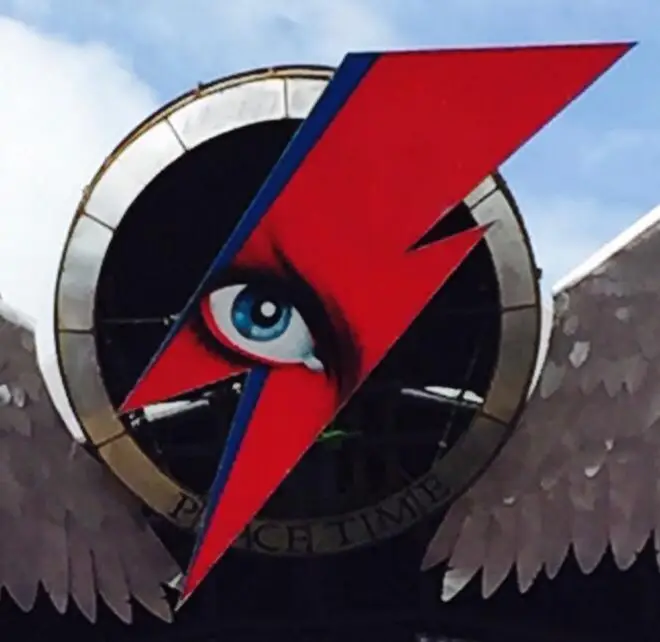
Other images from the exhibition include shots of David Bowie at the V&A, with a focus on his open-eyed expressions. The selected image features Bowie facing the camera with his eyes closed.
Tony Defries, then-Bowie’s manager, was well-known for his showbiz machinations and believed that playing the role of a superstar would help his client, Bowie, gain much bigger success. In fact, he had the belief that Bowie’s playing experience would actually make him a much bigger star.
Defries apparently insisted that the album cover be created using a remarkably costly seven-color system instead of the typical four, thereby making it the most expensive cover art ever at that time.
Defries believed that if a sufficient amount of money was invested in the project, RCA would be compelled to heavily promote it.
Tony Defries, in the book Duffy/Bowie, stated, “I was convinced by RCA to assist in funding and promoting Bowie because he was important enough to warrant superstar status, and I was impressed by his iconic artwork and image.”
Engaging a skilled, top-notch photographer to capture the product/brand and create the artwork was the most effective approach to convey that message. Brian possessed the talent to transform ordinary images into captivating ones.
Bowie was known to quickly discard his collaborators when he believed they were no longer valuable, but he seemed quite pleased with the Aladdin Sane cover.
Duffy stayed with Bowie on his 1973 tour, while Twiggy and Bowie made a heavily featured photo shoot on the cover of Pin Ups, a witty follow-up to Bowie’s 1979 album Lodger, and the Monsters Scary year’s following.
What was the inspiration behind David Bowie’s symbol of a lightning bolt and what is its significance?
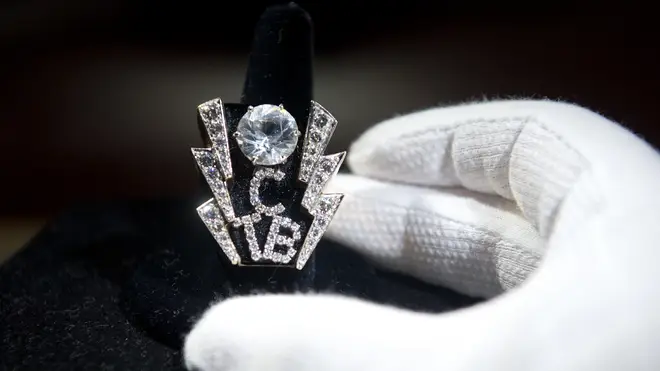
The idea for the logo came from Duffy and David Bowie themselves, who suggested that the business of caring for stood TCB, the letters and flash lightning, was inspired by Elvis Presley, as we’ve said.
Among Bowie, Duffy, and Laroche, the collaborative thinking session also contributed to the packaging of a Panasonic rice cooker that showcased the company’s logo at that time, which was crafted in the 1930s and has also been asserted as their own.
According to Francis Newman, the studio manager at Duffy, he was not involved in the discussion about the flash on the face and therefore cannot confirm if it originated from this rice cooker.

The flash may borrow from the lightning bolt that hits the Tower in the Tarot, Bowie scholar Nicholas Pegg has also suggested.
The personality of Aladdin, a character in the movie Stardust, seems to be split, and this is seen as a reflection of David Bowie’s mixed feelings about achieving superstardom after breaking through with Ziggy Stardust. This has been widely interpreted as Bowie potentially borrowing visual elements from Elvis, going beyond just a lightning bolt.
In January 1973, as early as the recording sessions for “Aladdin Sane” were wrapping up, David Bowie had already introduced the concept of the next role he would be playing, telling Harty Russell.
It was a matter of personal opinion. Conversely, Aladdin Sane was a continuation of Ziggy. That character, Aladdin Sane, was essentially a ‘Cracked Actor’ figure, he included.
I was going through this kind of schizophrenia, which inevitably reflected in my writing. I wasn’t enjoying it very much, but I was having a great time here on this tour.
Singing my songs live, although at the same time, not particularly desiring to be on those buses with all those unfamiliar individuals, longing to be elevated. It was challenging to accept, considering I am fundamentally an introverted individual. Consequently, Aladdin Sane was internally divided.
The crimson and azure hues of the face-splitting thunderbolt are “in a certain manner symbolic of the cultural divide between the United States and Britain,” as proposed by the Holden Luntz Gallery. It has additionally been recommended.
That makes some logical sense, as Bowie himself described Aladdin Sane as “Ziggy goes to America”.
When did David Bowie – and others – employ the lightning bolt emblem following Aladdin Sane?
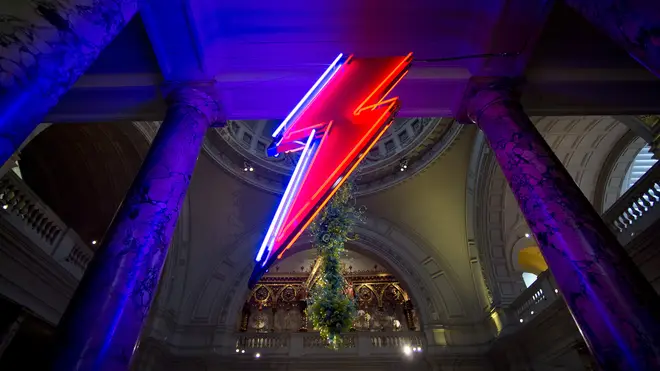
Given the magnitude of its durability, it is astonishing how infrequently David Bowie employed the thunderbolt symbol after the launch of the Aladdin Sane record.
The album cover didn’t have the same pin-ups as the previous year. Even though Pierre Laroche, a member of Bowie’s team, didn’t wear the lightning bolt on his face during his live shows, he was still a part of it. It didn’t feature popular singles like ‘Saturday Night Drive-In’ and ‘Time’ after all. Let’s spend the night together.
During his 1973 tour, Bowie used a variation of the lightning bolt theme with the new logo “Sleeve Dogs Diamond 1974’s” as the backdrop.
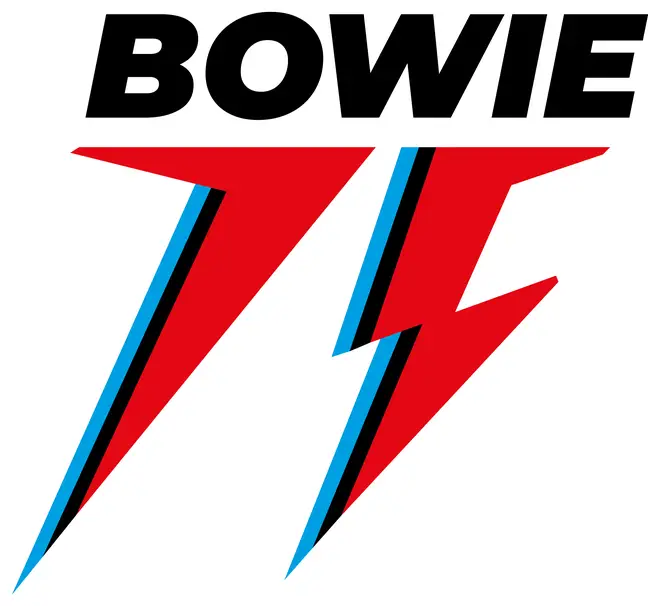
It disappeared, without even that symbol appearing on the subsequent year’s David Live or 1976’s Young Americans, swiftly as a (ahem) blink, at that time.
Not only will you not find it on any of his studio albums after that period, but also compilations released during his lifetime – unless you count collages that include the original Aladdin Sane sleeve – or on any of the live albums.
“The Legacy, which was released in November 2016, is the official album of David Bowie, where the lightning bolt that replaced the ‘I’ in ‘Bowie’ is featured on the front. This album, Very Best of David Bowie, is the only time we have seen it, after David Bowie’s death ten months ago.”
Unofficially, however, the image swiftly became associated with and inseparable from Bowie.
Ted Coyle, father of Harry Coyle, has used the symbol of ‘Ziggy Stardust’ as a representation for decades, with impersonators and fans alike emblazoning his face on bolt lightning in their eyes during the episode of the Lookalike Competition for All Stars Priests.
When Bauhaus released their single ‘Ziggy Stardust’ in 1982, they featured a mashup of Typeface type (and Super Creeps) Monsters Scary, with a more-recent and bolt lightning Sane Aladdin as the gloriously timey-wimey sleeve cover.
Kate Moss, an admirer of Bowie, showcased the identical crimson-and-cobalt thunderbolt on her face while gracing the front of Vogue in 2003.
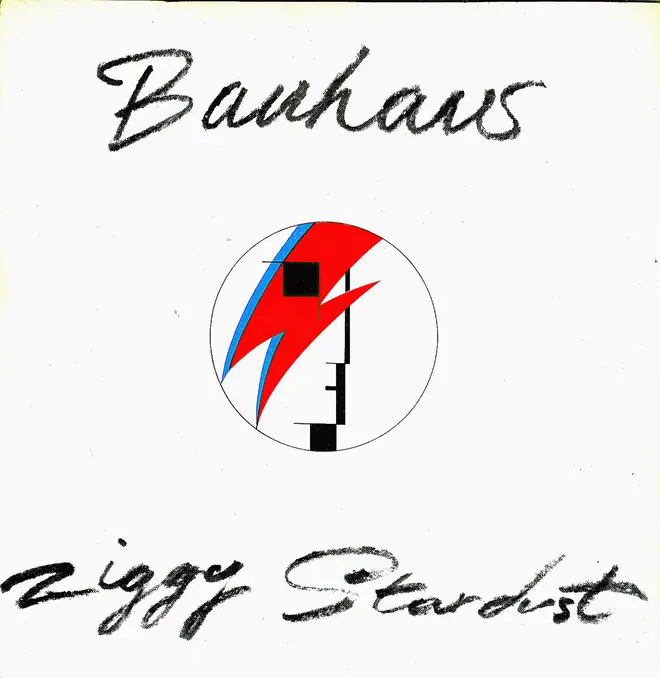
After Bowie tragically passed away, fans gathered in Brixton, the place where he was born and raised. They congregated at a mural on Jimmy Street, where a lightning bolt featuring artwork had been painted by the artist C. Three days prior to his 69th birthday in 2016, Bowie had died.
In 2025, the Victoria and Albert Museum will unveil a fresh gallery in Stratford, and we’re confident that it will gain global recognition just like the thunderbolt, which served as a prominent symbol in the remarkable David Bowie Is… Exhibition that commenced at the Victoria and Albert Museum in March 2013 and subsequently went on tour.
A signed agreement document from the initial photo session was auctioned at Bonham’s auction house for an astounding $20,000 in April 2022.

In spring 2023, COAM Madrid has been hosting an exhibition called Bowie taken by Duffy, exploring the collaborations between the two artists.
Naturally, it is the lightning bolt emblem that is a significant focal point throughout.
You can’t beat lightning-fast moves, especially in David Bowie’s shop, and the official David Bowie website is a hub for press releases and re-releases.
Throughout, you can purchase various versions of the original, including music, T-shirts, books, bags, stickers, and many other items. It consistently incorporates a variation of the Lightning Bowie logo from the Diamond Dogs era. It not only incorporates a variation of the Lightning Bowie logo from the Diamond Dogs era throughout.
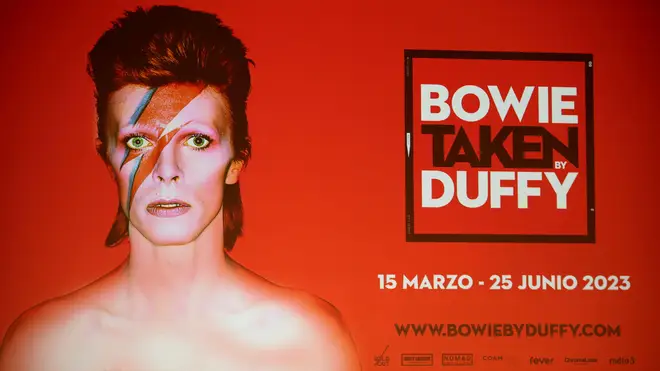
Furthermore, the Bowie 75 logo intentionally showcases a pair of those red-and-blue lightning bolts.
Another informed Chris, his son, that Duffy’s photographs of David are incredibly renowned. Chris speculated that the image of Aladdin Sane would be David’s lasting impact. It has transformed into a cultural symbol, as we all must eventually leave behind a legacy.